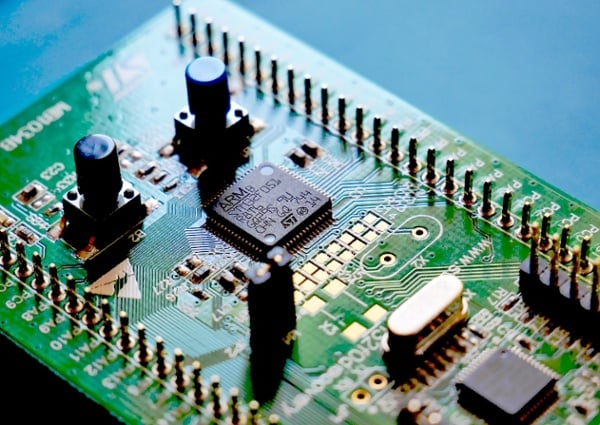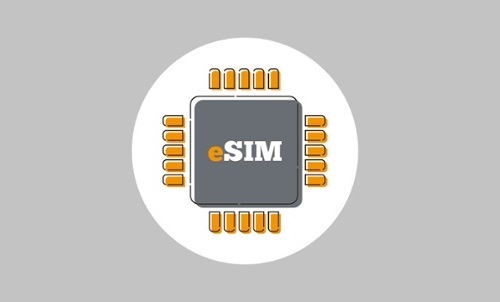

Quick definition: An integrated Subscriber Identity Module (iSIM) is a SIM that’s built into a dedicated Tamper Resistant Element (TRE) on the System on Chip (SoC) and provides all the same functionality as an embedded SIM (eSIM). While an MFF2 embedded SIM has to be soldered onto the circuit board, iSIMs are a dedicated component of the chip. They’re also the smallest SIM currently available, measuring just 1mm by 1mm—a fraction of the size of an MFF2, which is already much smaller than standard SIM card form factors.
Smaller components allow manufacturers to build smaller devices. The integrated SIM gives manufacturers the greatest flexibility in how they design cellular devices. In the future, iSIMs will be a dominant SIM form factor in consumer electronics and the Internet of Things (IoT).
It’s also worth noting that iSIMs save businesses some development costs. The wireless module may cost more as it includes a chip personalization step, but manufacturers save on SIM hardware costs, SIM trays, and manufacturing costs (since everything is already in the chipsetand does not need to be assembled).
iSIM vs. eSIM vs. SIM
With so many SIM variations out there, it’s easy to get confused—particularly when comparing an iSIM to an eSIM. Once you see them side-by-side though, the differences become more clear. The iSIM is essentially just the newest SIM form factor.

Traditional SIMs (1FF, 2FF, 3FF, 4FF) come on a plastic SIM card, which requires a specific-sized slot and has to be inserted into the device. They’re removable by design, making them more vulnerable to theft and damage.
An eSIM is a little more complicated. For starters, the term “eSIM” is highly ambiguous. For years, it’s been used to describe both the embeddable SIM form factor (MFF2) and the technology that enables SIMs to switch carrier profiles over-the-air. This capability is technically enabled by an embedded Universal Integrated Circuit Card (eUICC), which can actually be added to any SIM form factor. Using eSIMs and eUICCs synonymously muddies the waters, making it so any SIM form factor can be an eSIM, even if it’s not embeddable. Besides the MFF2 embeddable form factor there are now also additional embedded form factors like USON-8 or WLCSP. .
iSIMs are designed to have eUICCs even though the first generation of iSIM capable chipsets do not support OTA profile changes. But if you’re comparing an integrated SIM with an embedded SIM (MFF2), the difference is in size and how they’re installed. The embedded SIM gets soldered onto the device’s circuit board or module, whereas the integrated SIM has a dedicated space on the SoC (which is part of the module). Neither of these SIMs are physically accessible (like traditional SIMs), and they’re better protected from the elements.
For further information, you can check our article dedicated to the differences between SIM, eSIM and iSIM.
What are the benefits of an iSIM?
iSIMs have substantial benefits for cellular devices. They’re smaller and more robust than any other SIM on the market, provide cost advantages and that does open the door to new use cases. However, there are millions of IoT devices that already use SIM cards and eSIMs in a wide range of contexts. Cellular IoT has already revolutionized logistics, transportation, agriculture, healthcare, manufacturing, retail, and other industries.
The iSIM will bring cellular technology to new applications that require small devices —cellular IoT has been one of the most popular IoT connectivity solutions from the beginning, and MFF2s are still relatively new and plenty small. In most cases, iSIMs will therefore not revolutionize but evolve existing cellular applications.
“The wheel” has already been invented. This is just the best version of it yet.
1. No installation required
Whether you’re building a SIM card slot and installing SIM cards or soldering MFF2s onto the circuit board, SIM installation creates logistics challenges and adds time to manufacturing. Since an iSIM comes pre-installed on your modules, you don’t have to waste time and money on installation anymore.
2. Smaller SIMs mean smaller devices
At the end of the day, the most significant unique benefit of an iSIM is that it’s the smallest SIM form factor. Every generation of SIM form factors has been substantially smaller than the last, and this newest generation enables manufacturers to produce the smallest IoT devices yet. Security devices could become harder to detect. It could become easier to incorporate razor thin IoT devices in manufacturing processes and supply chain logistics. And there may be more ways for manufacturers to integrate IoT capabilities with other systems.
3. Integrated components provide greater protection
In some applications, a traditional SIM card could be damaged or lose contact to the board by vibrations or shock. Like an eSIM (MFF2), an iSIM doesn’t have to be inserted into a slot, so it’s less exposed to the elements and less vulnerable to being jostled around. It’s also tamper-proof. IoT devices with removable SIM cards are prime targets for identity theft, as someone with physical access to the device can remove the SIM card and use it in another cellular device. But when the SIM is built into the other components, it’s far more difficult to remove without rendering it unusable.
Who is offering iSIM today?
Integrated SIMs are still a new technology and there are only a very few chipsets available that support iSIM—mainly from Sony Altair. These chipsets support NB-IoT/LTE-M and 2G and are used in wireless modules from main manufacturers such as Quectel, Murata, Sercomm, and Sierra Wireless. The chipsets do not yet offer eUICC compliant profile update capabilities—so once the connectivity provider is provisioned on the iSIM it cannot be changed.
For a connectivity provider, it is necessary to work with a SIM manufacturer that is able to provide the iSIM-compliant profiles. emnify's SIM technology partner for the iSIM is Kigen who was the first to integrate with Sony Altair.
It is expected that new chipsets also from other vendors will become available through 2022 and 2023. These chipsets will be eUICC compliant. Once the chipset is available it will need to be integrated by the wireless module manufacturer.
Get the SIMs you need with emnify
While the iSIM hasn’t been implemented at scale yet, talk to one of our IoT experts to learn more about our iSIM offerings with our partner Kigen. You also have a range of other options when it comes to SIM form factors. emnify’s global IoT SIMs are available in all traditional form factors and the MFF2, and you can add eSIM capabilities to any of them. These network agnostic SIMs enable your devices to connect to more than 540 networks in over 190 countries.
Get in touch with our IoT experts
Discover how emnify can help you grow your business and talk to one of our IoT consultants today!

Christian Henke
If you want to understand how emnify customers are using the platform Christian has the insights. With a clear vision to build the most reliable and secure cellular network that can be controlled by IoT businesses Christian is leading the emnify product network team.



